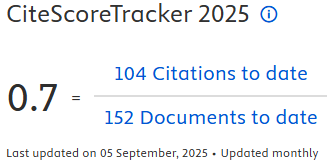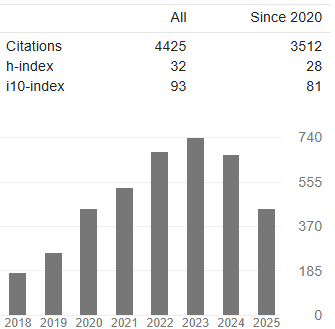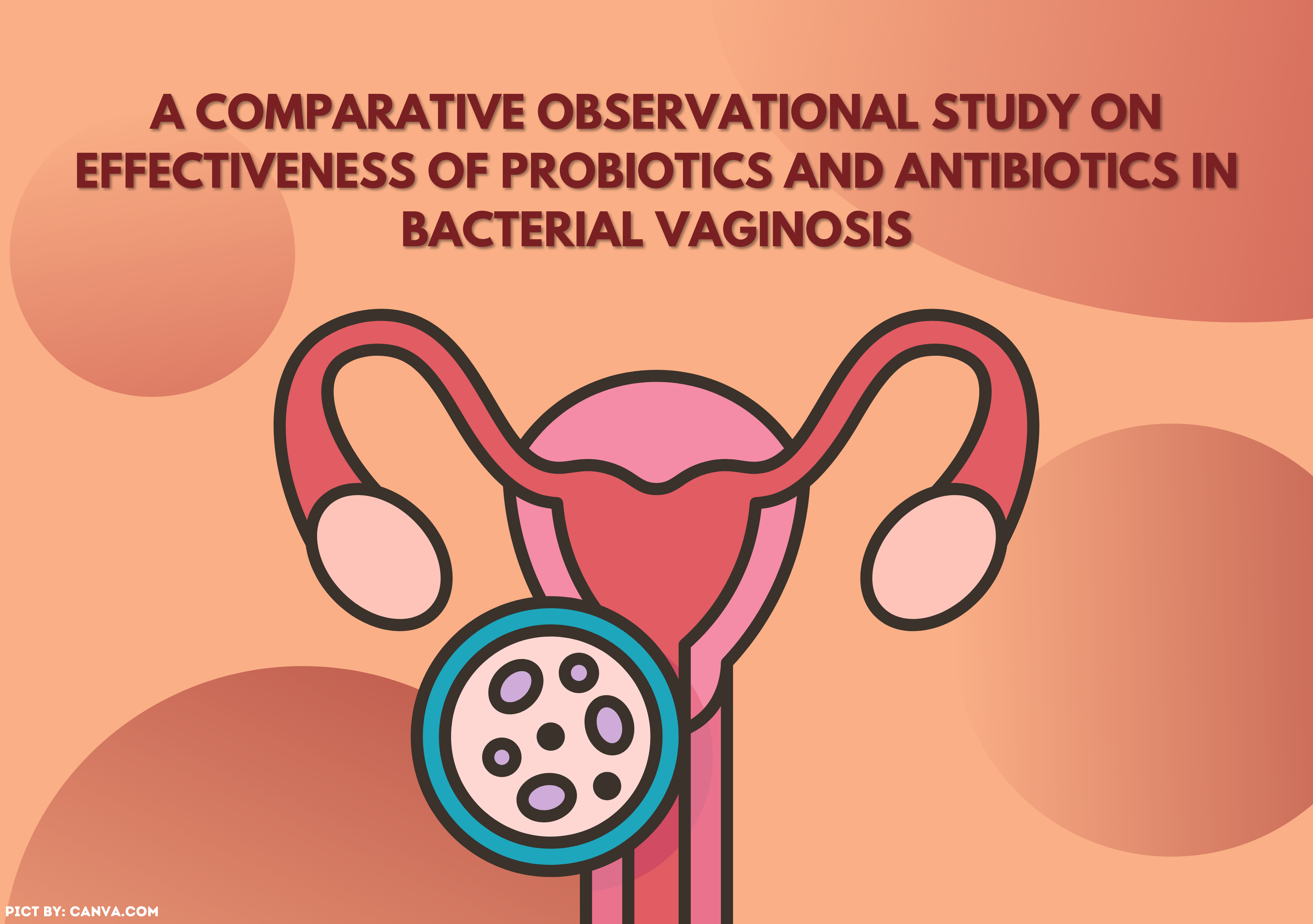FRUIT AND VEGETABLE CONSUMPTION, SEDENTARY ACTIVITIES, AND NUTRITION STATUS IN SENIOR HIGH SCHOOL STUDENTS DURING COVID-19 PANDEMIC: AN OBSERVATIONAL STUDY

Downloads
Introduction: Adolescent health will impact future well-being. The COVID-19 pandemic has prompted governmental imposition of restrictions on social activities. Hence, understanding the lifestyle factors, such as sedentary activities and fruit and vegetable consumption, affecting adolescents' nutritional status during the pandemic is crucial. In Samarinda, more than 18% of adolescents have inadequate nutritional status. Aims: to explore the relationship between sedentary activities, fruit and vegetable consumption, and the nutritional status of adolescents. Method: Using an online questionnaire, a cross-sectional study was conducted on 300 high school students during the COVID-19 pandemic, between October and December 2021. Sedentary activity levels were assessed using the Adolescent Sedentary Activity Questionnaire (ASAQ), while fruit and vegetable consumption was evaluated through the FFQ-SQ (Food Frequency Questionnaire-Semi Quantitative). Nutritional status was determined using z score of body mass index (BMI) for age. Data analysis employed the Chi-square test and Fisher exact test. Results: Gender, maternal occupation, and average monthly parental income were found to be associated with nutritional status (p=0.020; p=0.038; p=0.045). However, no significant association was observed between fruit and vegetable consumption and nutritional status (p=0.102; p=0.121). Certain sedentary activities, such as doing assignments without using a laptop/computer (p=0.029) and reading for pleasure (p=0.038), were linked to nutritional status. Fruit and vegetable consumption showed no association with the nutritional status of adolescents. Conclusion: Conversely, certain sedentary activities were found to be associated with nutritional status. Educating adolescents within families and schools regarding the significance of physical activity and balanced nutrition is imperative.
Augusto, R.A., Cobayashi, F. and Augusto, M. (2014). Associations between low consumption of fruits and vegetables and nutritional deficiencies in Brazilian schoolchildren. Public Health Nutrition, 18(5), pp.927–935. https://doi.org/10.1017/S1368980014001244
Biddle, S.J.H., Pearson, N., Ross, G.M. and Braithwaite, R. (2010). Tracking of sedentary behaviours of young people: A systematic review. Preventive Medicine, [online] 51(5), pp.345–351. https://doi.org/10.1016/j.ypmed.2010.07.018
Falbe, J., Willett, W.C., Rosner, B., Gortmaker, S.L., Sonneville, K.R. and Field, A.E. (2014). Longitudinal relations of television , electronic games , and digital versatile discs with changes in diet in adolescents. The American Journal of Clinical Nutrition, 100(4), 1173–1181. https://doi.org/10.3945/ajcn.114.088500
Fatima, W. (2020). Assessment of Nutritional Status and its Related Factors among Female Adolescent Girls : A School based Study in Arar city , Kingdom of Saudi Arabia Assessment of Nutritional Status and its Related Factors among Female Adolescent Girls : A School based Study in Arar city, Kingdom of Saudi Arabia. International Journal of Medical Research & Health Sciences, 8(2).pp. 133-144.
Fletcher, E.A., Mcnaughton, S.A., Crawford, D., Cleland, V., Gatta, D., Hatt, J., Dollman, J. and Timperio, A. (2018). Associations between sedentary behaviours and dietary intakes among adolescents. Public Health Nutrition, 21(6), pp.1115–1122. https://doi.org/10.1017/S136898001700372X
Gubbels, J.S., Kremers, S.P., Goldbohm, R.A., Stafleu, A. and Thijs, C. (2012). Energy Balance-Related Behavioural Patterns In 5-Year-Old Children And The Longitudinal Association With Weight Status Development In Early Childhood. Public Health and Nutrition, 15, pp.1402-1410. https://doi.org/10.1017/S1368980011003089
Heslin, A.M. (2023). Impact of nutrition science on human health : Past perspective and future directions ’. In: Postgraduate Symposium Proceedings of the Nutrition Society Adolescent nutrition and health : characteristics , risk factors and opportunities of an overlooked life stage Proceedings of the Nutrition Society. https://doi.org/10.1017/S0029665123002689
Indonesia Ministry of Education, Culture, Research andTechnology. (2020). Pedoman Penyelenggaraan Belajar Dari Rumah Dalam Masa Penyebaran Corona Virus Disease (Covid-19).
Indonesian Ministry of Health. (2014). Balanced Nutrition Guidelines. Ministry of Health of Republic iIdonesia.
Indonesia Ministry of Health. (2019). Laporan Nasional RISKESDAS 2018. Lembaga Penerbit Balitbangkes.
Krijger, A., Steenbergen, E., Schiphof-Godart, L., Van Rossum, C., Verkaik-Kloosterman, J., Elstgeest, L., Ter Borg, S., Raat, H. and Joosten, K. (2023). Clusters Of Lifestyle Behaviours And Their Associations With Socio-Demographic Characteristics In Dutch Toddlers. European Journal of Nutrition, 62, pp. 1143-1151. https://doi.org/10.1007/s00394-022-03056-x
Łuszczki, E., Sobek, G., Bartosiewicz, A., Baran, J., Weres, A., Dereń, K. and Mazur, A. (2019). Analysis of Fruit and Vegetable Consumption by Children in School Canteens Depending on Selected Sociodemographic Factors. Medicina (Kaunas, Lithuania), 55(7), p. 397. https://doi.org/10.3390/medicina55070397
Maehara, M., Rah, J.H., Roshita, A., Suryantan, J., Rachmadewi, A. and Izwardy, D. (2019). Patterns and risk factors of double burden of malnutrition among adolescent girls and boys in Indonesia. PLoS ONE, 14(8), pp.15–18. https://doi.org/10.1371/journal.pone.0221273
Mardiyah, S. D., P., Wicaksono, D. S., L. and Fransiska. (2022). Dampak Pandemi COVID-19 terhadap Perubahan Perilaku Makan Mahasiswa di Indonesia. Amerta Nutrition, 6, pp. 298-305. https://doi.org/10.20473/amnt.v6i3.2022.298-305
Marshall, S.J., Biddle, S.J.H., Gorely, T., Cameron, N. and Murdey, I. (2004). Relationships between media use, body fatness and physical activity in children and youth: a meta-analysis. International Journal of Obesity and Related Metabolic Disorders,28(10), pp.1238–1246. https://doi.org/10.1038/sj.ijo.0802706
Mori, S., Asakura, K., Sasaki, S. and Nishiwaki, Y. (2021). Relationship between maternal employment status and children ’ s food intake in Japan. Environmental Health and Preventive Medicine, [online] pp.1–10. https://doi.org/10.1186/s12199-021-01026-z
Noerfitri, Putri, T.W. and Febriati, R.U.(2020). Hubungan antara Kebiasaan Melewatkan Sarapan , Konsumsi Sayur Buah dan Fast Food , Aktivitas Fisik, Aktivitas Sedentary dengan Kejadian Gizi Lebih (Relationship Between the Habits of Skipped Breakfast, Consumption of
Vegetables Fruits and Fast Food). Jurnal Ilmiah Kesehatan Masyaraka 13(2),56–63. https://doi.org/10.52022/jikm.v13i2.205
Oh, C., Carducci, B., Vaivada, T. and Bhutta, Z.A. (2022). Interventions to Promote Physical Activity and Healthy Digital Media Use in Children and Adolescents : A Systematic Review. Pediatrics, 149(Suppl 5). https://doi.org/10.1542/peds.2021-053852I
Oktaviani, W.D. (2012). Hubungan Kebiasaan Konsumsi Fast Food, Aktivitas Fisik, Pola Konsumsi, Karakteristik Remaja Dan Orang Tua Dengan Indeks Massa Tubuh (Imt) (Studi Kasus Pada Siswa Sma Negeri 9 Semarang Tahun 2012). Jurnal Kesehatan Masyarakat Universitas Diponegoro, 1(2).
Prabhu, S. A., Shukla, N. K. and Mandala, S. R. (2020). Assessment of Nutritional Status of Rural Children (0-18 years) in Central India Using World Health Organization (WHO) Child Growth Standards 2007. Indian Journal of Community Medicine, 45, pp.323-327. https://doi.org/10.4103/ijcm.IJCM_348_19
Peltzer, K. and Pengpid, S. (2010). Fruits and vegetables consumption and associated factors among in-school adolescents in seven African countries. International Journal of Public Health, 55(6), pp. 669–678. https://doi.org/10.1007/s00038-010-0194-8
Reilly, J.J. and Kelly, J. (2011). Long-term impact of overweight and obesity in childhood and adolescence on morbidity and premature mortality in adulthood: systematic review. International Journal of Obesity, [online] 35(7), pp.891–898. https://doi.org/10.1038/ijo.2010.222
Ridder, M.A.M., Koning, M., Visscher, T.L.S., Hirasing, R.A., Seidell, J.C. and Renders, C.M. (2018). Energy Balance-Related Behavior And Anthropometric Measures Among Adolescents Across Three Educational Levels: A Cross-Sectional Study In Dutch Schools. Health Education and Behavior, 45, 349-358. https://doi.org/10.1177/1090198117715666
Salsabila, L. (2020). Hubungan Pengetahuan, Pola Makan Dan Kebiasaan Konsumsi Sayur Dan Buah Dengan Status Gizi Pada Remaja Usia 15-18 Tahun Di Kelurahan Duren Mekar, Depok. Universitas Pembangunan Nasional Veteran Jakarta.
Setiadi, K. (2015). Hubungan Antara Usia Dan Indeks Massa Tubuh Dengan Kadar Asam Urat Pada Remaja Di Sma Negeri 1. Sekolah Tinggi Ilmu Kesehatan Muhammadiyah. Sarjana's Thesis.
Smetanina, N., Albaviciute, E., Babinska, V., Karinauskiene, L. and Albertsson-wikland, K. (2015). Prevalence of overweight / obesity in relation to dietary habits and lifestyle among 7 – 17 years old children and adolescents in Lithuania. BMC Public Health, 15, pp.1–9. https://doi.org/10.1186/s12889-015-2340-y
Stiglic, N. and Viner, R.M. (2019). Effects of screentime on the health and well-being of children and adolescents : a systematic review of reviews. BMJ Open, 99(1). https://doi.org/10.1136/bmjopen-2018-023191
Wisnuwardani, R.W., Henauw, S. De, Ferrari, M., Forsner, M., Gottrand, F., Huybrechts, I., Kafatos, A.G., Kersting, M., Knaze, V., Manios, Y., Marcos, A., Molnár, D., Rothwell, J.A., Rupérez, A.I., Scalbert, A., Widhalm, K., Moreno, L.A. and Michels, N. (2020a). Total Polyphenol Intake Is Inversely Associated with a Pro / Anti-Inflammatory Biomarker Ratio in European Adolescents of the HELENA Study. Journal of Nutrition, [online] 150(6), pp.1610–1618. https://doi.org/10.1093/jn/nxaa064
Wisnuwardani, R.W., Henauw, S. De, Forsner, M. and Gottrand, F.(2020b). Polyphenol intake and metabolic syndrome risk in European adolescents : the HELENA study. European Journal of Nutrition, 59(2), pp.801–812. https://doi.org/10.1007/s00394-019-01946-1
Wisnuwardani, R. W. N., R. Saputri, A. and Kurniawati, E. R. (2022). Perubahan Aktivitas Fisik dan Konsumsi Makanan Ultra Proses Pada Mahasiswa Selama Pandemi COVID-19: Penelitian Observasional Media Gizi Indonesia (National Nutrition Journal), 17, pp.293-301. https://doi.org/10.20473/mgi.v17i3.293-301
World Health Organization (2010). Global status report on noncommunicable diseases.
Xiang, M., Zhang, Z. and Kuwahara, K. (2020). Impact of COVID-19 pandemic on children and adolescents' lifestyle behavior larger than expected. Progress in Cardiovascular Diseases. Progress in Cardiovascular Diseases, [online] 63(4), pp.531–532. https://doi.org/10.1016/j.pcad.2020.04.013
Yang, N. and Kim, K. (2020). Is the Perceived Fruit Accessibility Related to Fruit Intakes and Prevalence of Overweight in Disadvantaged Youth: A Cross-Sectional Study. Nutrients, 12(11), p.3324. https://doi.org/10.3390/nu12113324
Young, D.R., Reynolds, K., Sidell, M., Brar, S., Ghai, N.R., Sternfeld, B.,Jacobsen, S.J., Slezak, J.M., Caan, B. and Quinn, V.P. (2014). Effects of Physical Activity and Sedentary Time on the Risk of Heart Failure. Circulation. Heart Failure, 7(1), pp.21–27. https://doi.org/10.1161/CIRCHEARTFAILURE.113.000529
Copyright (c) 2025 The Indonesian Journal of Public Health

This work is licensed under a Creative Commons Attribution-NonCommercial-ShareAlike 4.0 International License.
- The authors agree to transfer the transfer copyright of the article to The Indonesian Journal of Public Health effective if and when the paper is accepted for publication.
- Authors and other parties are bound to the Creative Commons Attribution-NonCommercial-ShareAlike 4.0 International License for the published articles, legal formal aspect of journal publication accessibility refers to Creative Commons Attribution-NonCommercial-ShareAlike 4.0 International License (CC BY-NC-SA), implies that:
- Attribution ” You must give appropriate credit, provide a link to the license, and indicate if changes were made. You may do so in any reasonable manner, but not in any way that suggests the licensor endorses you or your use.
- NonCommercial ” You may not use the material for commercial purposes.
- ShareAlike ” If you remix, transform, or build upon the material, you must distribute your contributions under the same license as the original.































